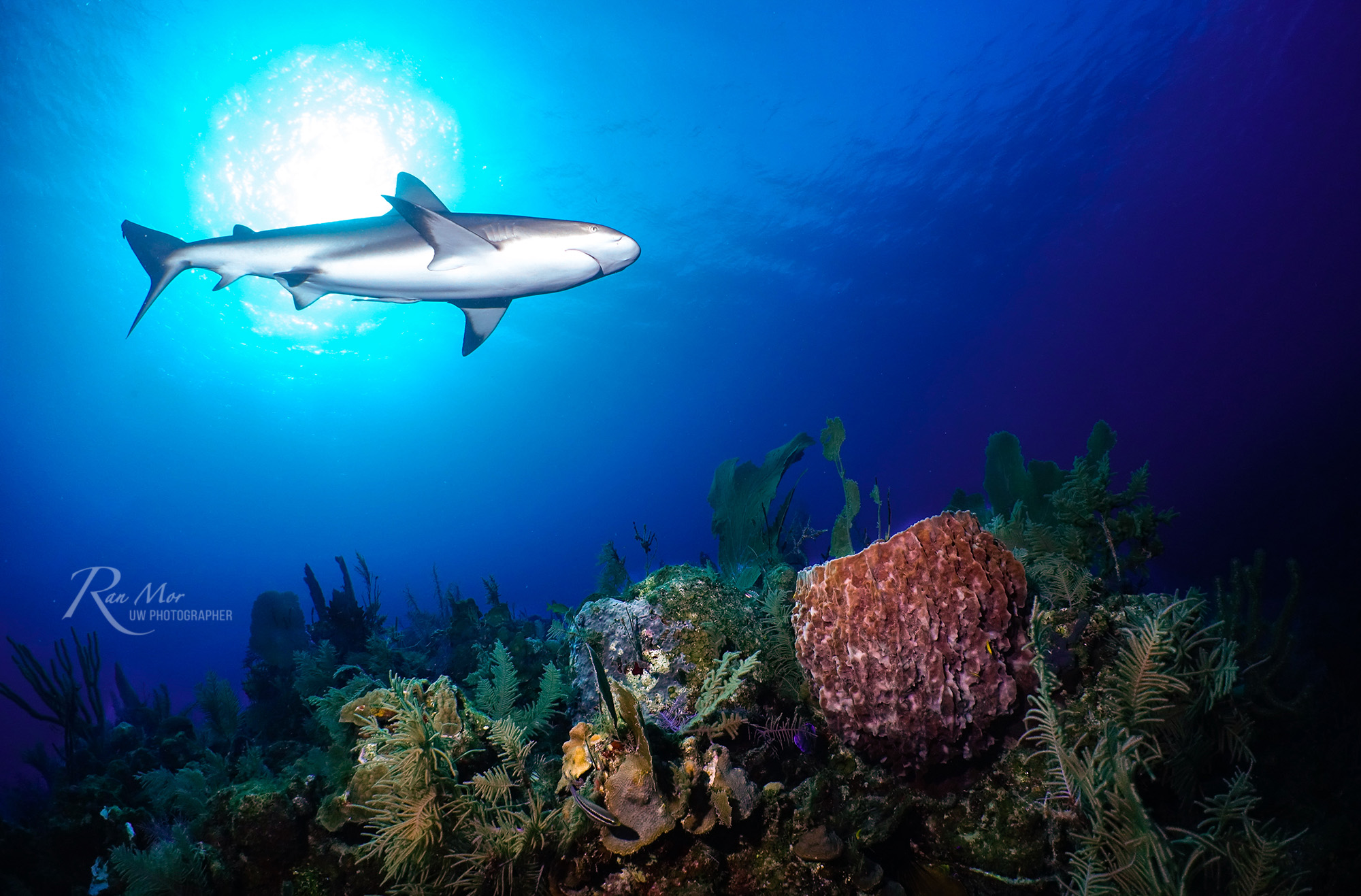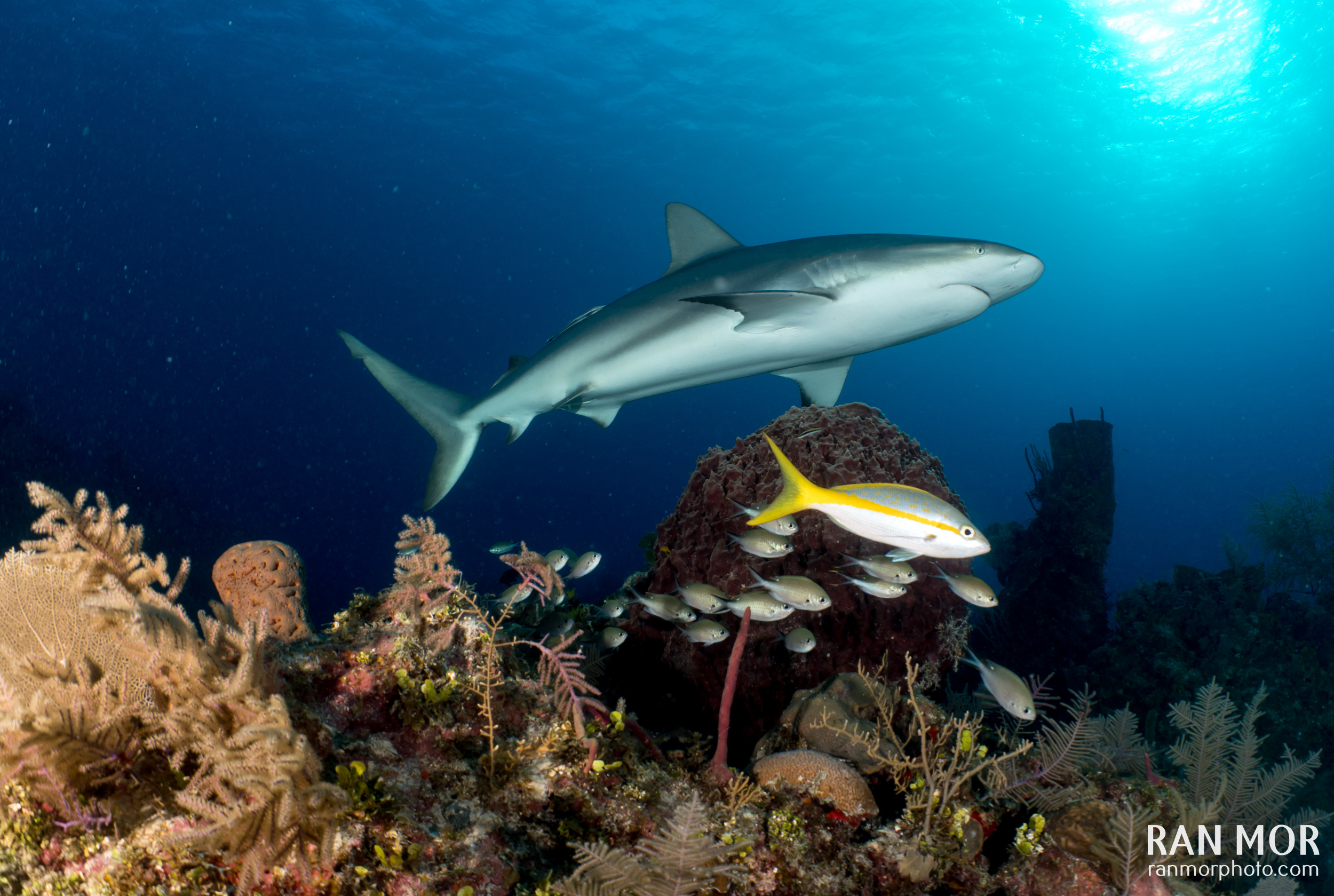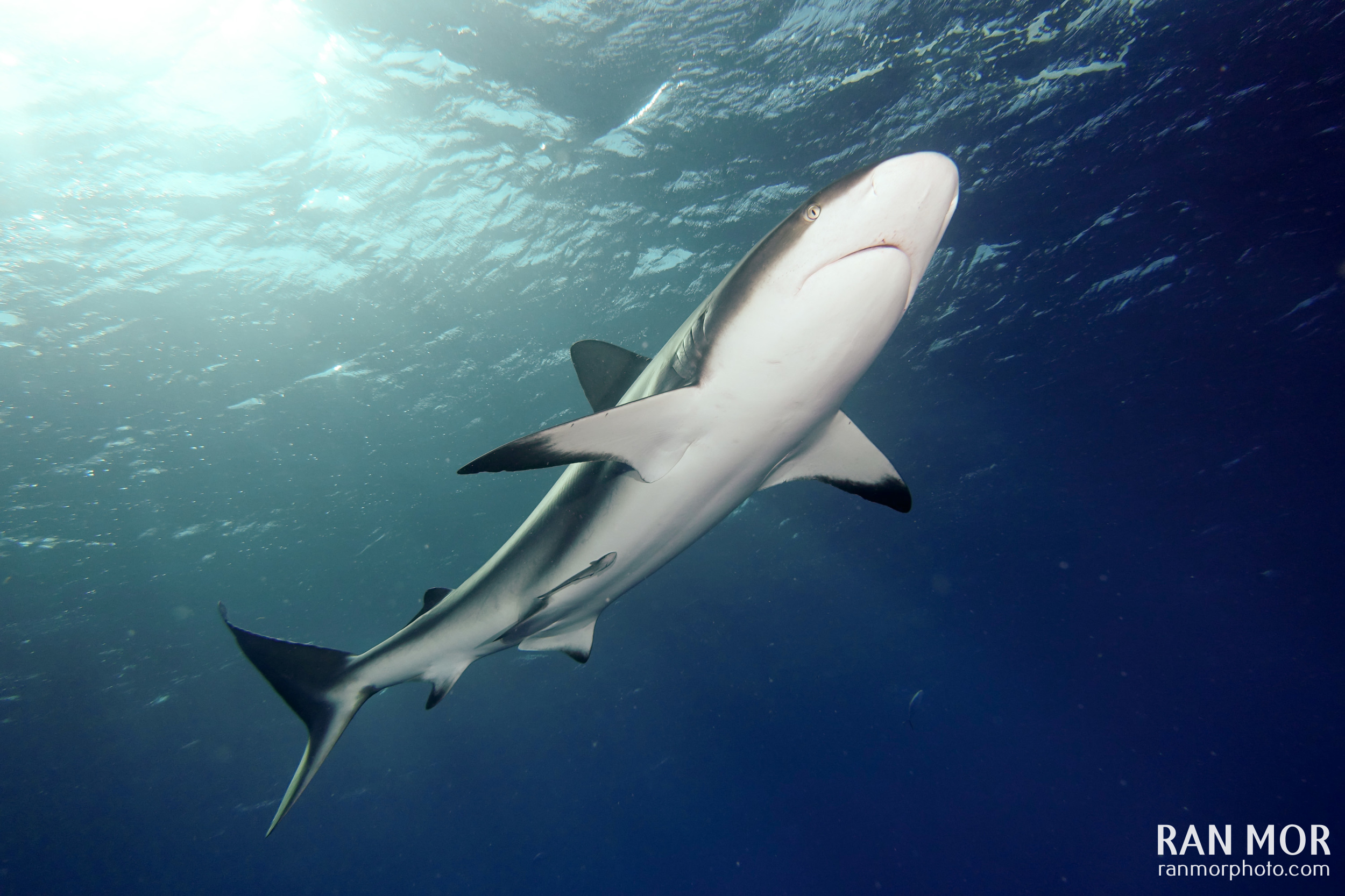Reef Sharks: Coral’s Best Friend

Sharks are the ocean’s top predators, but which shark species tops the rest? Many would vote for great whites, with their fearsome teeth and huge appetites. Some might say bull sharks, with their tendency to explore rivers (often near humans), or tiger sharks, who consume anything from dolphins to bike wheels.[i] But in the context of coral reefs, the undisputed apex hunter is none of the above. The winners are the reef sharks, which are small, sometimes shy, and rarely dangerous to humans.
No reef shark species surpasses 3 meters maximum length, and it’s more common to see adults between 1 and 2 meters. They eat small bony fish, squid, crabs, and lobsters, not turtles or other sharks like a tiger shark would. They like the sunny shallows, rarely venturing deeper than 80 meters or swimming the open ocean. Altogether, they give an impression of docility relative to some of their cousins.[ii]
However, it’s the reef sharks, not tigers or bulls, who dedicate their lives to hunting coral reef fish and invertebrates, and they have perfected their technique over thousands of years. Reef sharks’ small, slim bodies help them swerve quickly in pursuit of agile fish, and their fairly slender snouts are perfect for sliding into coral crevices where they’ve pinned their prey.
It is the reef sharks, not tigers or bulls, who dedicate their lives to hunting coral reef fish and invertebrates, and they have perfected their technique over thousands of years.
Reef sharks’ voracious appetite and deadly hunting skills serve a higher purpose, one which benefits the whole reef community. By preying on the fish population, they keep the ecosystem in balance, which supports coral growth and health. For example, by eating smaller predators like groupers, sharks ensure that groupers don’t eat too many rabbitfish, who keep the reef clear of algae. If algae were to bloom on the reef, it would quickly overshadow slow-growing corals, leading to massive loss of habitat for all the local fish and invertebrate species. The World Wildlife Fund (WWF) has made reef sharks ‘priority species’ for this reason.[iii]
There are five species of reef sharks: blacktip, whitetip, silvertip, grey, and Caribbean. Here’s what they have in common:
Reproduction: Reef sharks give birth to live young, just like humans. And just like humans, the babies are nourished by a placental connection to their mother. It takes a full year or more for shark pups to be born, and their litter size is small: 1 to 5 pups per pregnancy. Reef shark pups are around a half meter in length; they receive no parental care.[iv]
Lifespan: Reef sharks reach maturity at around 5 years old, and the oldest recorded reef shark lived for 25 years.[v]

Habitat: Reef sharks inhabit the warm tropical waters of every ocean, and they are comfortable in every reef zone, from the shoreline shallows to the bottom of deep drop-offs. But they don’t only live in coral reefs! Coral is only one part of a habitat triangle which also includes seagrass beds and mangrove roots. In many of the most pristine tropical marine ecosystems, fish and invertebrates move between the three habitats for feeding, mating, and protection. One of the best places to see baby blacktip reef sharks is within a mangrove forest. And if you’re walking along a beach lined by seagrass, keep an eye out: you might spot a baby shark from the shore!
Dead or Alive? The IUCN (International Union for the Conservation of Nature) lists reef sharks as “Near Threatened.” But it’s already well-established that reef shark populations have hugely declined over recent decades. Reef sharks are intentionally caught for their skin, oil, fins, and meat. They’re also caught by accident within huge nets or long-lines meant to target other species. It’s extremely hard to find a reef which has a healthy number of reef sharks.
Famous research conducted in 2008 in the Line Islands of Hawaii[vi] showed that on a truly pristine reef, 85% of the fish biomass (weight of all the fish) consisted of top predators. Of that 85%, 74% were sharks! These findings were unprecedented; scientists had long assumed that a few top predators required a large base of prey population to survive. While this bottom-heavy “food pyramid” is true for land-based predator-prey relationships, a healthy coral reef turns the pyramid upside-down. (The rapid production of prey, and the ability of sharks to go hungry for long periods, make this upside-down pyramid possible.)
Because almost no reef today enjoys the benefits of healthy reef shark populations, coral is direly vulnerable to death from bleaching and coral disease. This is why sharks should be protected as strongly as possible.
Danger to Humans: Reef sharks are often encountered by divers, but they pose little danger. Some species are curious, while others tend to rush away at the sight of bubbles. Attacks have occurred when a shark was isolated and feeling defensive, or when a diver was spear-fishing. An attack is usually one quick bite or scrape, without fatality. If you observe a shark arching its back or making quick changes of direction, it may be about to attack.
Blacktip Reef Sharks
Carcharhinus melanopterus
Blacktips rarely exceed 1.8 meters maximum length, and their pups can be as small as 35 centimeters.[vii] They can be identified by characteristic black tips on their dorsal fin and lower tail fin. Blacktips love to jump out of the water in pursuit of prey, and since they’re daytime hunters, divers and snorkelers get to see the spectacle.
Whitetip Reef Shark
Triaenodon obesus
These mostly bottom-dwelling sharks, so named because of the white tips of their dorsal and upper tail fins, rarely exceed 1.6 meters total length. They hunt for eels, octopuses and small fish at night, and spend their days resting under caves and ledges, often cuddled with others of their species. Whitetips stick around when they find a good home, spending years on the same reef, and even sleeping in the same spot every day.[viii]
Silvertip Reef Shark
Carcharhinus albimarginatus
The silvertip reef shark, identified by the white tips on all its fins, is a large reef shark species, growing up to 3 meters in length. It’s found in the Indian and Pacific Oceans, but not the Caribbean, and its distribution is patchy.[ix] It usually prefers offshore reefs. Silvertip reef sharks are big enough to add eagle rays and tuna to the usual reef shark diet of small fish and invertebrates.
Grey Reef Shark
Carcharhinus amblyrhinchos
This medium-large reef shark can grow up to 2.6 meters. Like the silvertip, it’s absent from the Caribbean; unlike the silvertip, it’s also absent from the western Pacific. Grey reef sharks are known for swimming in large schools during the day. Instances of aggression in these sharks often coincide with a shark becoming separated from the group, perhaps feeling vulnerable and defensive. Pre-attack behavior is very distinctive in grey reef sharks; they raise their snout, arch their back, and swim with an exaggerated swaying motion.[xi]

Caribbean Reef Shark
Carcharhinus perezi
These sharks can grow up to 3 meters, and are found only in the Caribbean and along the warm-water coastline of South America down to Brazil. For Caribbean-based divers, Caribbean Reef Sharks are a common sight, either cruising the reef or resting on the bottom. They are also the most common dinner guests at shark-feeding experiences, a controversial tourist-pleasing practice which is banned in the USA but allowed in the Bahamas and other nearby countries.[xii]
If you spot a reef shark while diving, enjoy it. You’ll not only get to see a dynamic, fascinating creature in its natural habitat- you’ll know how much it contributes to the entire coral reef. If you can support reef shark conservation efforts in any way, don’t hesitate to get involved. They’re worth it.
[i] http://degreesearch.org/blog/shark-week-tiger-shark-the-oceans-garbage-can/
[ii] https://www.sharksider.com/reef-shark/
[iii] http://wwf.panda.org/what_we_do/endangered_species/sharks/reef_sharks/
[iv] https://www.sharksider.com/reef-shark/
[v] https://www.sharksider.com/reef-shark/
[vi] http://journals.plos.org/plosone/article?id=10.1371/journal.pone.0001548
[vii] http://www.aquariumofpacific.org/onlinelearningcenter/species/blacktip_reef_shark
[viii] http://www.aquariumofpacific.org/onlinelearningcenter/species/whitetip_reef_shark/
[ix] http://www.iucnredlist.org/details/161526/0
[x] https://www.floridamuseum.ufl.edu/fish/discover/species-profiles/carcharhinus-albimarginatus/
[xi] https://www.floridamuseum.ufl.edu/fish/discover/species-profiles/carcharhinus-amblyrhynchos
[xii] https://www.floridamuseum.ufl.edu/fish/discover/species-profiles/carcharhinus-perezi
- Strange Sharks – February 1, 2018
- Getting to know Jaws: the truth about great white sharks – October 20, 2017
- Reef Sharks: Coral’s Best Friend – September 26, 2017

 CAD
CAD